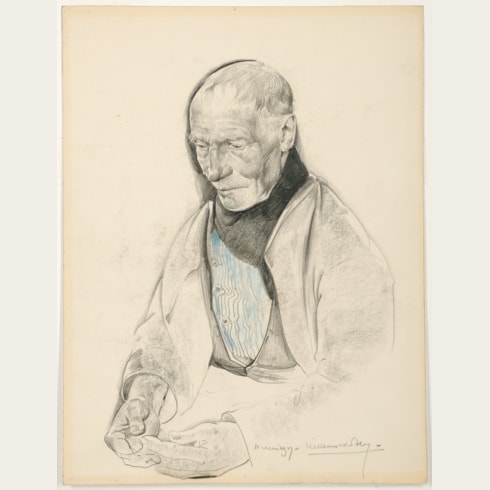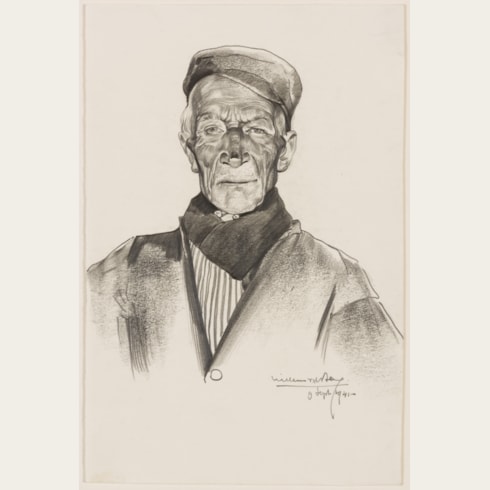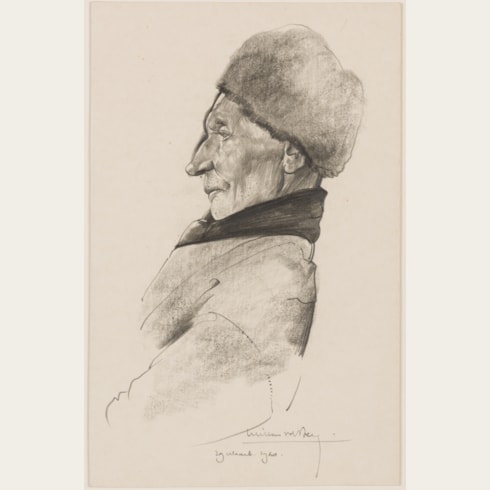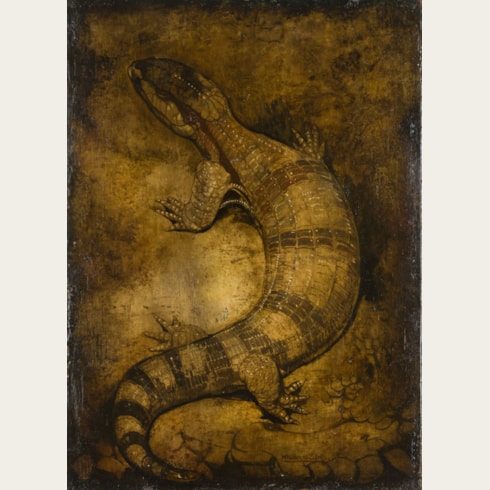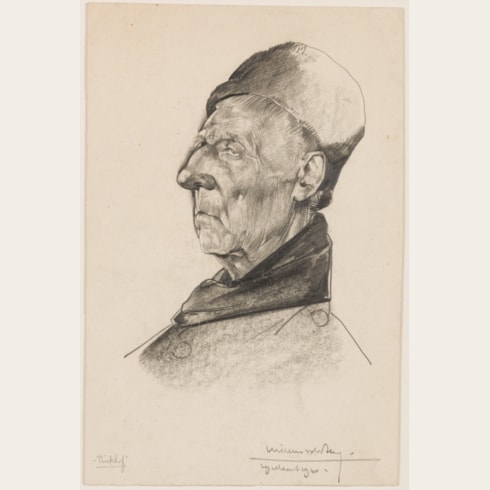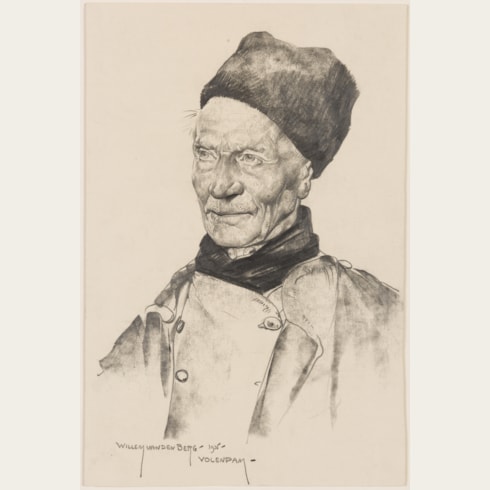Willem VAN DEN BERG
(The Hague 1886 - Leiden 1970)
A Eurasian Black Vulture
Signed WvdBERG scratched into the paint surface at the lower centre.
Further signed and dated W. van den Berg / 1922 on the reverse of the panel.
16.8 x 11.8 mm. (6 5/8 x 4 5/8 in.) [panel]
This small painting depicts a cinerous vulture (Aegyptius monachus), also known as a Eurasian black vulture or monk vulture. A type of so-called Old World vulture with black plumage and a bald head with a ruff of neck feathers (hence the name ‘monk vulture’), the cinerous vulture is a large raptor with a range extending across much of Europe and Asia. It is, however, extinct in much of the western half of its range, and endangered elsewhere. There are an estimated 4,500 cinerous vultures which survive today.
Willem van den Berg made several drawings and paintings of exotic birds which he saw at the Amsterdam Zoo. That unusual creatures such as this vulture captured his imagination is evident in the several studies he produced of these impressive birds of prey. A pen, ink and brown wash drawing of a vulture is in the Teylers Museum in Haarlem, while a similar, very large pastel study of a resting vulture appeared at auction in Amsterdam in 2003. The present sheet is also closely related to a woodcut of a vulture in profile by van den Berg.
This small painting once belonged to the eminent Dutch art historian and museum director H. E. van Gelder (1876-1960), who served as director of the Gemeentemuseum in The Hague between 1912 and 1941.
The son of the painter and printmaker Andries van den Berg, who taught at the Koninklijke Academie in The Hague, Willem van den Berg also spent time in the studio of his cousin, the painter and painting conservator Carel de Wild. Soon after completing his training in The Hague, van den Berg began exhibiting his work in group shows and solo exhibitions. In 1913 he met the painter Willem van Konijnenburg, whose style was to prove influential on the young artist, and began to paint the fishermen, women and ships on the beach at Scheveningen. He also painted still lifes, landscapes, genre scenes and portraits, as well as studies of birds and animals, and in 1926 one of his paintings was exhibited in Paris.
In 1938 van den Berg settled in Amsterdam, where he was appointed a professor at the Rijksakademie van Beeldende Kunsten. From there he made frequent visits to the small picturesque fishing village of Volendam, where he found numerous subjects to paint and draw. A member of the artist’s societies Arti et Amicitiae in Amsterdam and Pulchri Studio in The Hague, van den Berg worked well outside the avant-garde trends of the art of the 20th century. Although his realist style became less popular in Holland after the Second World War, the artist found some success in America in the 1960s, when several exhibitions of his work were held at galleries in New York, Chicago and San Francisco. He also produced lithographs and linocuts, and his work can be found today in several Dutch museums.
Provenance
Thence by descent
Private collection, The Netherlands.







